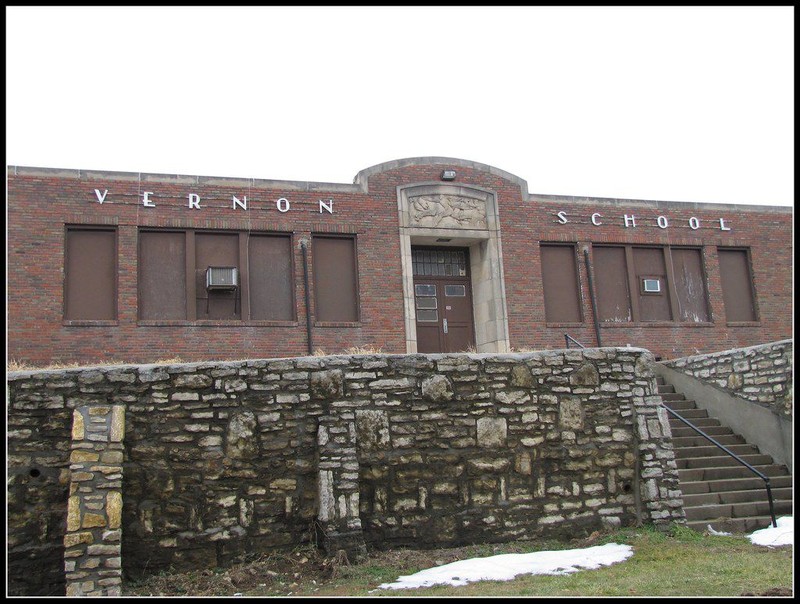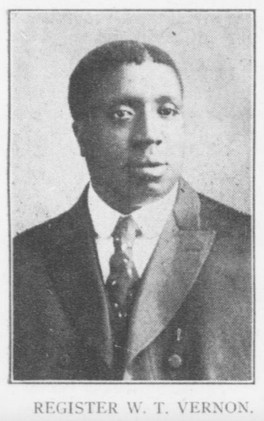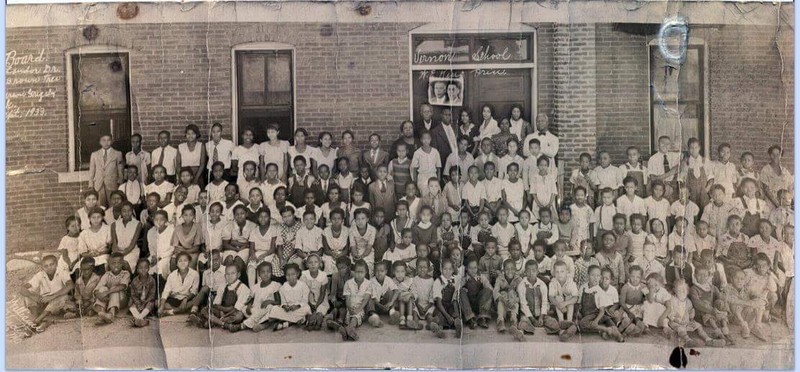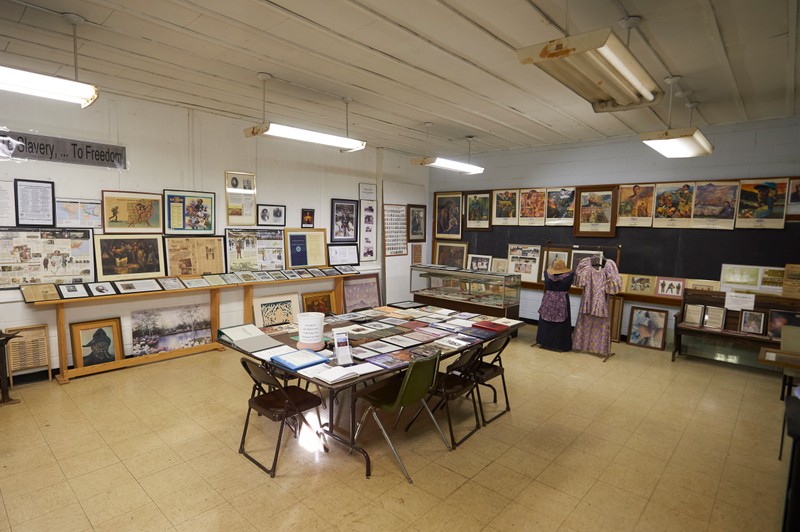Quindaro Underground Railroad Museum
Introduction
Author-Uploaded Audio
David Trowbridge talks with Luther Smith, the director of the museum
Text-to-speech Audio
Kansas City's Vernon School was constructed in 1936 and now houses a community center. The school dates back to 1858 with the opening of what was then known as the Colored School of Quindaro, an institution of education and uplift within a community that earned a reputation for their support of the abolition of slavery. The school began operation in the years leading up to the Civil War when it provided instruction to African Americans, including many former slaves, who had recently arrived in the territory of Kansas. That original school building from the antebellum era was expanded several times before being replaced by the current brick facility in 1936 with funds from President Franklin D. Roosevelt’s New Deal program. The school was later expanded in 1950 and is named in honor of William Tecumseh Vernon, an African American leader from Kansas City who had served as the president of Western University. Vernon also served as Register of the US Treasury and was a bishop in the African Methodist Episcopal Church. The school operated until 1971, when the school was closed and the remaining students were sent to Quindaro Elementary School as part of the city's integration plan which began in the mid-1950s. After closing, the building became a community center and now houses the Quindaro Underground Railroad Museum.
Images
Vernon School

William Tecumseh Vernon, whom the school was named after

Students of Vernon School in 1939

The building now houses the Quindaro Underground Railroad Museum

Backstory and Context
Text-to-speech Audio
The Colored School of Quindaro opened in 1858. The original school was located in a stone structure built for the purpose of educating African American children in the abolitionist community of Quindaro. The school was segregated and run by its own district (#17) with a board consisting entirely of African Americans. By the early 1930s, the school building was in disrepair and overcrowded. A Public Works Administration (PWA) project razed the old building and built a new brick school in its place in 1936. The new school had four rooms and served the first through eighth grades. A further two rooms were added in 1950.
The Colored School of Quindaro was renamed Vernon School, after William Tecumseh Vernon. Vernon was the son of former slaves and became the president of Western University (see separate Clio entry) in 1896 at the age of only 25. He was an accomplished speaker and writer and is credited with expanding the university’s curriculum and state funding. [3] In 1906, President Theodore Roosevelt appointed Vernon Register of the US Treasury, the highest post ever achieved by an African American at the time.Vernon would later become consecrated as a bishop with the African Methodist Episcopal (AME) Church and work as a missionary in South Africa.
In 1954, the Brown vs. the Board of Education of Topeka landmark case desegregated schools across the country. The next year, about one-third of Vernon School’s children were sent to integrate Quindaro Elementary School. Partially due to desegregation and partially due to a decreasing population of Quindaro, the Vernon School closed in 1971. The building was then used by a community center, run by the AME Church. In 2004, the building was added to the National Historic Register.
Today, the building houses the Quindaro Underground Railroad Museum. The museum tells the story of Quindaro as a major destination on the Underground Railroad, right on the border with slave state Missouri. Exhibits illustrate the route that was taken across the river by slaves seeking freedom in Kansas Territory. A quilt display shows how messages were sent using designs on quilt squares. The museum also contains photographs, clothing, maps, and a biography about William T. Vernon.
Sources
1. Kansas State Historical Society Cultural Resources Division. “Review Board Approves 15 Nominations.” Kansas Preservation Vol. 26, No. 5 (September - October 2004): 2-4. Accessed October 3, 2019. https://www.kshs.org/resource/ks_preservation/kpsepoct04.pdf.
2. Adams, Patricia. “The History of our Public Schools in Wyandotte County, Kansas: Vernon School.” Kansas City Public Schools. Last updated January 2, 2012. Accessed October 3, 2019 via the Way Back Machine at https://web.archive.org/web/20120211225845/http://www.kckps.org:80/disthistory/closedbuildings/vernon.html.
3. Kansas Historical Society. “William T. Vernon.” Kansapedia. Last updated January 2013. Accessed October 3, 2019. https://www.kshs.org/kansapedia/william-t-vernon/12230.
4. Ladage, Cindy. “The Wyandotte Trail and Underground Railroad.” Traveling Adventures of a Farm Girl Blog. August 21, 2018. Accessed October 3, 2019. http://travelingadventuresofafarmgirl.com/2018/08/21/the-wyandotte-trail-and-underground-railroad/.
5. “Reunion for KCK's Old Vernon School set for Sept. 20-22.” The Community Voice. Sep 12, 2019. Accessed October 3, 2019. http://www.communityvoiceks.com/living/family_and_relationships/reunion-for-kck-s-old-vernon-school-set-for-sept/article_d333e668-d5a7-11e9-b516-4320e2ac67fe.html.
